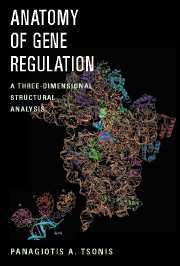Crossref Citations
This Book has been
cited by the following publications. This list is generated based on data provided by Crossref.
Howard, Daniel
and
Benson, Karl
2003.
Genetic and Evolutionary Computation — GECCO 2003.
Vol. 2724,
Issue. ,
p.
1690.
Howard, Daniel
and
Benson, Karl
2003.
Evolutionary computation method for pattern recognition of cis-acting sites.
Biosystems,
Vol. 72,
Issue. 1-2,
p.
19.
Jackson, Dean A.
2006.
Encyclopedia of Molecular Cell Biology and Molecular Medicine.
Wilczyński, Bartek
Hvidsten, Torgeir R
Kryshtafovych, Andriy
Tiuryn, Jerzy
Komorowski, Jan
and
Fidelis, Krzysztof
2006.
Using local gene expression similarities to discover regulatory binding site modules.
BMC Bioinformatics,
Vol. 7,
Issue. 1,
2008.
Galactose Regulon of Yeast.
p.
157.
Smith, M. Schwenker
Lee, S. A.
and
Rupprecht, A.
2009.
The Stability of the B Conformation in Wet-spun Films of CaDNA: A Raman Study as a Function of Water Content.
Journal of Biomolecular Structure and Dynamics,
Vol. 27,
Issue. 1,
p.
105.
Wilczynski, Bartek
Dojer, Norbert
Patelak, Mateusz
and
Tiuryn, Jerzy
2009.
Finding evolutionarily conserved cis-regulatory modules with a universal set of motifs.
BMC Bioinformatics,
Vol. 10,
Issue. 1,
De Carlo, Sacha
Lin, Shih-Chieh
Taatjes, Dylan J.
and
Hoenger, Andreas
2010.
Molecular basis of transcription initiation in Archaea.
Transcription,
Vol. 1,
Issue. 2,
p.
103.
Jackson, Dean A.
2011.
Encyclopedia of Molecular Cell Biology and Molecular Medicine.
Singh, Amit
2016.
A remembrance of Dr Panagiotis A Tsonis (1953–2016).
Regeneration,
Vol. 3,
Issue. 4,
p.
222.



